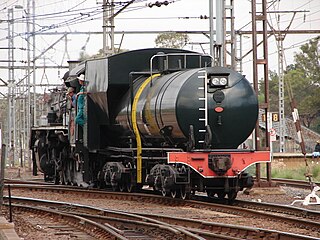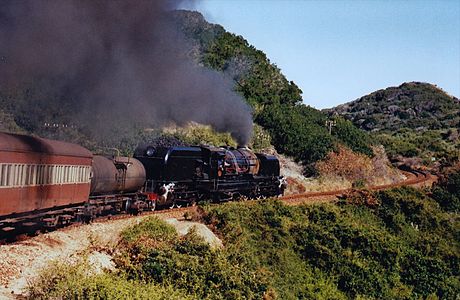
Under the Whyte notation for the classification of steam locomotives by wheel arrangement, a 4-6-2+2-6-4 is a Garratt or Union Garratt articulated locomotive using a pair of 4-6-2 engine units back to back, with the boiler and cab suspended between them. The 4-6-2 wheel arrangement of each engine unit has four leading wheels on two axles, usually in a leading bogie, six powered and coupled driving wheels on three axles, and two trailing wheels on one axle, usually in a trailing truck. Since the 4-6-2 type is known as a Pacific, the corresponding Garratt type is usually known as a Double Pacific.

The South African Railways Class GL 4-8-2+2-8-4 of 1929 was an articulated steam locomotive.
Under the Whyte notation for the classification of steam locomotives by wheel arrangement, a 4-8-2+2-8-4 is a Garratt articulated locomotive consisting of a pair of 4-8-2 engine units back to back, with the boiler and cab suspended between them. The 4-8-2 wheel arrangement has four leading wheels on two axles, usually in a leading bogie, eight powered and coupled driving wheels on four axles and two trailing wheels on one axle, usually in a trailing truck. Since the 4-8-2 type is generally known as a Mountain, the corresponding Garratt type is usually known as a Double Mountain.

The South African Railways Class 25NC 4-8-4 of 1953 was a steam locomotive.

The South African Railways Class 21 2-10-4 of 1937 was a steam locomotive.

The South African Railways Class 19D 4-8-2 of 1937 was a steam locomotive.
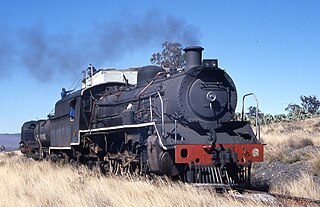
The South African Railways Class 19B 4-8-2 of 1930 was a steam locomotive.
The Union of South Africa was established on 31 May 1910 in terms of the South Africa Act, which unified the former Cape Colony, Natal Colony and the two colonised former republics, the Transvaal and the Orange Free State. One of the clauses in the Act required that the three Colonial Government railways, the Cape Government Railways, the Natal Government Railways and the Central South African Railways, also be united under one single administration to control and administer the railways, ports and harbours of the Union. While the South African Railways (SAR) came into existence in 1910, the actual classification and renumbering of all the rolling stock of the three constituent railways required careful planning and was only implemented with effect from 1 January 1912.

The South African Railways Class NG G11 2-6-0+0-6-2 of 1919 was a narrow gauge steam locomotive.

The South African Railways Class 8 4-8-0 of 1902 was a steam locomotive from the pre-Union era in the Cape of Good Hope.

The South African Railways Class FC 2-6-2+2-6-2 of 1925 was an articulated steam locomotive.
The South African Railways Class GE 2-8-2+2-8-2 of 1925 was an articulated steam locomotive.
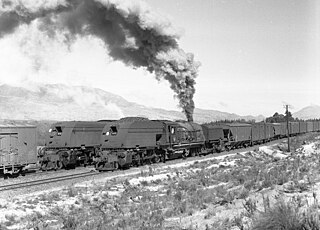
The South African Railways Class GEA 4-8-2+2-8-4 of 1946 was an articulated steam locomotive.

The South African Railways Class GM 4-8-2+2-8-4 of 1938 was an articulated steam locomotive.

The South African Railways Class GMA 4-8-2+2-8-4 of 1954 was an articulated steam locomotive.

The South African Railways Class GO 4-8-2+2-8-4 of 1954 was an articulated steam locomotive.

The South African type X-17 water tender was a Garratt steam locomotive tender.
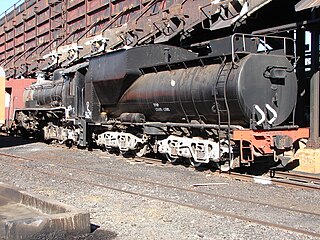
The South African type MY tender was a steam locomotive tender.

The South African type EW1 tender was a steam locomotive tender.






